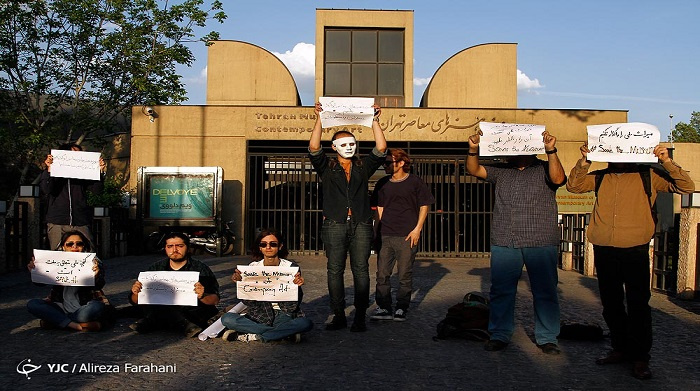Munch Screams for Tehran Museum

Hessam Emami
An Iranian museum in possession of works by Van Gogh, Picasso, Warhol, Munch and others is reportedly on the verge of privatization and it is bad news for everyone.
Last month, Memari News reported it had received information saying the Tehran Museum of Contemporary Arts (TMOCA), a unit working under the Iranian Ministry of Culture’s department for art affairs, would be transferred to Roudaki Foundation, a non-governmental entity established under the supervision of the ministry.
The foundation’s board of trustees includes the Culture Minister, his deputy for art affairs, the country’s Management and Planning Organization, and two experts in art and cultural affairs chosen by the minister, but it remains financially independent as a legal entity.
Tehran Museum of Contemporary Arts is a national treasure, in possession of more than 4000 invaluable works of Iranian and international visual artists. Foreign transactions bring huge revenues, currently deposited in the state treasury as part of public funds.
Despite constant warnings by the Supreme Leader Ayatollah Ali Khamenei, museum grabbing seems to stand as a new episode of numerous cases of land, jungle, mountain, and beach grabbing in Iran. After the Islamic Revolution in 1979, the government confiscated many private properties (including publications, labs, and the like) owned by proponents of the Shah’s regime but a reverse privatization process, in its real sense of the word, failed to start until during President Mohammad Khatami’s tenure. However, the reason why the recent privatization has raised such concerns lies somewhere else. Major banks and industry heavyweights were apparently privatized under Ahmadinejad’s administrations in what has been termed mockingly priva-state-izations. The monopolies are still largely controlled either by governmental organizations or by close semi-private allies. Economic rents and corruptions strangling the country’s economy are partly blamed on such instances of privatization.
The so-called privatization of the TMOCA could trigger increased corruption, as the Museum is a source to finance and credit different individuals and groups. According to the Memari News report published on March 9, the move not backed by any legislative measures was intended to be finalized during the New Year holidays amid a complete media blackout. The director of the museum, Majid Mollanorouzi, then dismissed the existence of any documents registered in the secretariat, in an interview with Memari News, a website specializing on architecture.
Last week the report resurfaced, sparking unprecedented repercussions. On Thursday, a Telegram channel launched to save the museum called for a gathering in front of the museum on Saturday at 3 p.m. to protest the decision. A small number of activists did not wait and gathered there for a sit-down strike on Thursday (photo). Artists and activists have joined the initiative but officials still deny the reports.
Deputy Culture Minister for Art Affairs Ali Moradkhani dismissed the reports as baseless rumors on Thursday, stressing that such a move should be approved by the administration and supervised by the parliament. “Any measures to improve the situation will definitely require basic expert analysis and we cannot just suddenly relegate the museum to the Roudaki Foundation,” he was quoted as saying by ISNA. A similar official statement from the art affairs department followed the interview.
The denials backlashed on the same day when a scanned image of an official letter went viral online. The letter signed by the Culture Ministry’s director general of the ‘administrative development and renovation bureau’ asks Moradkhani to declare the current expenditures of the TMOCA, Saba Museum and Niavaran Culture House. According to the letter dated February 25, the decision to relegate, “without formalities”, the management of the three organizations was made on December 27, 2015 by a committee for ‘management structure and technologies’ of the ministry’s central headquarters.
Well-known Iranian painter Aydin Aghdashloo condemned the move in an op-ed for Shargh Daily, stressing the fact that a museum as important as the TMOCA is never privatized in other countries. He called officials to close the museum if they are concerned about financial issues.
Iran’s Painters Association also issued a statement, demanding the authorities to shed light on the reports. “Unfortunately in most cases, important decisions in culture and arts spheres are made behind closed doors and without contribution by the cultural elites or cooperation by art associations and societies, leaving artists uninformed about significant cultural decisions,” read the statement.
Parliamentarian Fatemeh Rahbar said in an interview with Afkar News published on Thursday that if the museum’s privatization had been underway, the parliamentary committee on principle 90 of the Constitution would intervene and block the initiative.
Pieces by Marcel Duchamp, Paul Gauguin, Edvard Munch, Vincent van Gogh, Claude Monet, Jackson Pollock, Rene Magritte, Andy Warhol, and Edward Hopper are among prominent works represented in the museum.

